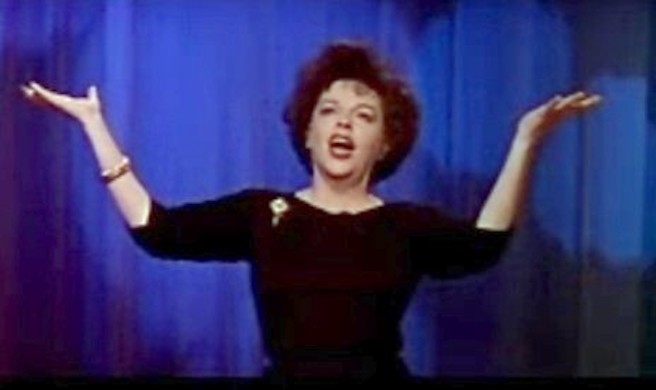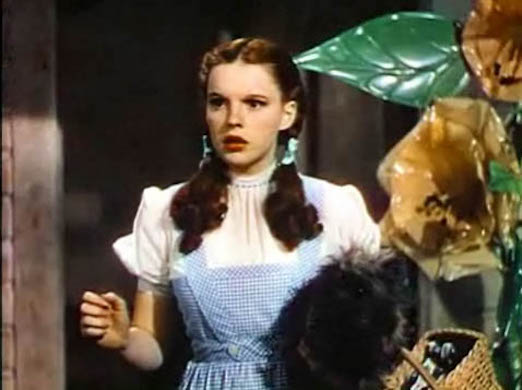‘Special Creation’ Judy Garland at 100
She has become something more than even an icon. She’s a concept, she’s a metric, she’s a mirror we hold up in order to better see ourselves.

It’s difficult to imagine anyone reacting to Judy Garland on any level other than an emotional one. We might be black or white, old or young, straight or gay — it doesn’t matter: Judy Garland has become something more than even an icon. She’s a concept, she’s a metric, she’s a mirror we hold up in order to better see ourselves. In Garland, we see our happiest and our saddest moments at the same time, our dreams and our nightmares, our fables and our foibles, our angels and our demons, our triumphs and our tragedies.
Garland, whose centennial the world is celebrating this month, looms so large as a creature of our imagination and our emotions that we tend to forget that she was no accident. We give credit to those who helped make her who she was, such as her vocal coach cum rabbi, Roger Edens, or the producer Arthur Freed, who helped her find her on-screen identity. Ultimately, though, Garland was, in Jerry Herman’s phrase, “her own special creation.” She was the one who made herself into a great artist.
Garland is so connected to our personal feelings that we tend to forget that she was, in fact, not a creature of pure emotion but knew exactly what she was doing — on stage, at least. It was only when she was offstage that she could be out of control. One of the more telling anecdotes in Mel Tormé’s memoir of working with Garland on her 1963-64 TV series is her demonstrating to him how she was able to cry on cue. Like Frank Sinatra, Garland not only had emotional and vocal power, she had incredible technique and control.

Our celebration of Garland’s 100th is made even more meaningful with the first complete, high-quality release of an essential document from her catalog. Titled “Judy Garland — The Final Concert in Copenhagen,” this is a production of an independent, Canada-based firm called HDTT, short for High Definition Tape Transfers, that has, as Lawrence Schulman’s helpful annotation tells us, worked with the original location recording tapes, remastered by audio engineer John H. Haley, to get the best possible audio quality.
“I do scream a lot,” she says here after belting out “Chicago,” which is at least partially true: Some of her more exciting numbers are the high-volume, high-intensity productions. Yet that’s not even half of what she does; what distinguishes Garland from those latter-day descendents who would attempt to fill her ruby slippers is that she is perhaps even more effective on the quietest possible moments as on the loudest.
The concert repertoire shows how Garland combines several possible pasts with her current present; like many another Hollywood or Broadway headliner, she sings songs written for her most famous roles, like “Over the Rainbow” and “The Man That Got Away,” both by Harold Arlen, the composer who was essentially her good luck charm. Yet by including the likes of the 1918 “Rock-a-Bye Your Baby with a Dixie Melody” or the 1922 “Chicago,” Garland knew how to assimilate the collective past — not only her own history but everybody else’s. Then there are newer songs that she was never able to formally record in a studio, like, “I’d Like to Hate Myself in the Morning” (by her former fiance, the talented John Meyer) and the self-celebration anthem, “For Once in My Life,” which everybody both over and under 30 seems to have sung in the Nixon years.
This location recording, taped at the Falkoner Centret theater in Copenhagen on March 25, 1969 — about three months before her death at the age of 47 — is saturated with the singer’s irrepressible humor. She never misses an opportunity to make fun of herself or the circumstances.
This concert is also notable for a guest appearance from the tour’s opening act, the singer Johnnie Ray (1927-90). He had enjoyed a brief vogue and a few hits in the early-1950s as a quasi-R&B belter who presaged the rock ’n’ roll movement — a sort of John the Baptist who prophesied the coming of Elvis. Ray is hardly a worthy duet partner for Garland the Great, but his presence inspires her to indulge in what she describes as “a couple of quiet songs.”
Ray plays piano for her — somewhat awkward but sincere — and joins her in singing “Till the Clouds Roll By,” and the results sound incredibly loose and unrehearsed. It’s a charming, moving moment. Better still is “Am I Blue?” Even though Garland is under-miked, we can hear that this is some of the most vulnerable singing she’s ever done. Ray sabotages the moment by joining her vocally in the last eight bars, but it’s still remarkable.
Garland laughs her way through the famous special material verse to “San Francisco” before charging into the famous time changes, double time to half time. (Clearly, this was the rhythmic trajectory that inspired John Kander and Fred Ebb’s “Theme from ‘New York, New York.’”) Halfway through the final number — “Over the Rainbow,” no surprise — she seems to be crying. Of course, she couldn’t know that this would be the final time that she would sing her signature song, and that soon enough she’d be traveling over the rainbow for real. In that journey, Judy Garland gave the rainbow to all of us.


